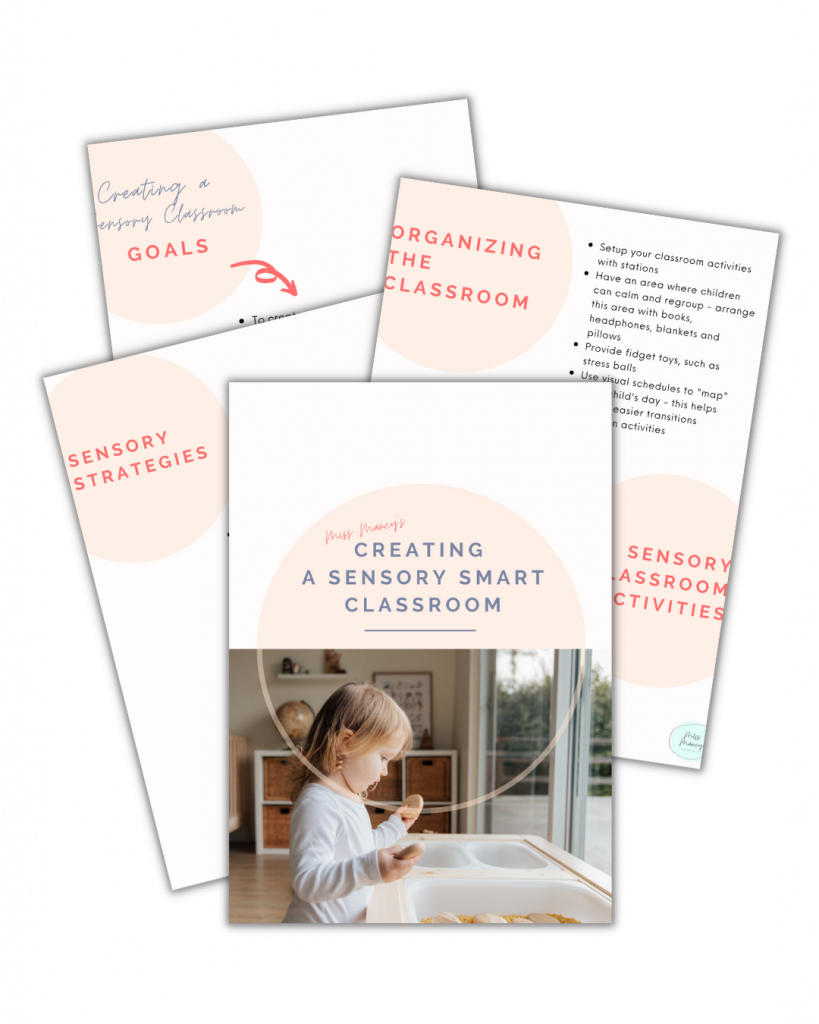As an OT I get the opportunity to visit many schools in South Florida. Teachers ask me all the time how to implement sensory components in their classrooms. Here is a list of a few suggestions:
Sensory/Arousal:
1. Try to plan activities that incorporate as many sensory components as possible. Ex: finger paint on textured surfaces.
2. For children who need to calm, use deep pressure such as pressure with your hands to his/her shoulders.
3. For children who need increased arousal, have them do a few jumping jacks, wall push ups etc… or use light touch from your finger tips or a feather to awaken their senses.
4. For children who touch other peers during circle time, consider sitting them against a wall or bookshelf for extra grounding and trunk support, give them a fidget toy to hold.
5. Touching others can be an indication that the child needs tactile input to his hands. You can brush the child’s hands, have him play with playdoh/other resistive mediums, play hand clapping games, crawling or wheelbarrow walking,
6. You can begin all table-top activities with a little “chair exercise” program that allows all the children to get their state of arousal at the same level. Ex: prior to commencing a handwriting task. Sing a song with the children that wakes up the arms, legs, stretches etc…
7. Consider having a “treasure box” with a variety of sensory toys. You can send a child to pick a sensory toy that helps them calm and become centered/organized. Ex: Put stress balls, fidget toys, body brush, lotion, etc…
8. Make a “bean bag snake” using a sock and dried beans. The over-aroused child can put it on his shoulders or lap to help calm during circle time or at table-top.
9. Another great way to calm is to give a child heavy resistive work to do ex: carry heave books to the table, push/pull heavy cart.
10. Outdoor activities are an all around wonderful sensory experience.
Here’s a few more tips:
Classroom Organization:
1. Set up your classroom in stations and make sure you have a quiet area where kids can calm and regroup if needed when class get too loud.
2. Make sure the quiet area has lots of book, heavy blankets, pillows. Bean bags, earphones.
3. Provide fidget toys such as tactile balls, “stress” balls.
4. Use visual schedules at the beginning of class that “maps” out the children’s day. This helps kids transition more easily from one activity to the next and can keep them more organized.
5. For a child who has difficulty transitioning from one activity to the next, allow them to hold on to an object that they like (aka. a transitioning object) This helps them “keep it together” during the transition. You can also assign a task to the child such as “helper” (ex: he holds the cards you will be using and brings them to circle time)
6. Use songs to help children transition such as “Clean up…clean up…”
7. Make sure your schedule allows for movement breaks as well as table-top activities.
8. During circle time. Keep the children that have a harder time keeping still next to you or make sure you give them something to hold like a puppet. Or give them a fidget toy to hold on to or even a weighted lap pad.


